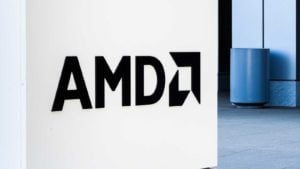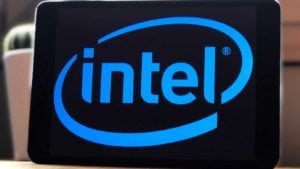From the first pick’s game-changing product captivating social platforms to the second one’s processor dominance and the third’s strides in semiconductor innovation, each holds a narrative of resilience and innovation. Witness the fourth’s artful engagement schemes, the fifth’s strategic metamorphosis, the sixth’s customer-centric evolution and the seventh’s networking innovations. They all unfurl an intricate tapestry with growth catalysts and transformative potential.
The article reveals the underlying narratives propelling these companies into the echelons of potential market stardom €”a saga awaiting keen investors and market enthusiasts alike.
Meta (META)

Meta (NASDAQ:META) has continuously innovated its advertising offerings across its platforms, notably introducing features like Reels. This video-centric format, integrated seamlessly into the user experience of Instagram, has witnessed substantial success. Over 40% of the increased time spent on Instagram is attributed to Reels. Now, Reels has become a core element of Meta’s apps.
Additionally, the company’s strategy to evolve Reels into an integral part of its overall portfolio of video services signifies its focus on long-term engagement and ad revenue growth.
Moreover, the online commerce vertical significantly drives Meta’s advertising revenue growth. Strong advertiser spending in China targeting customers in other markets has contributed to this growth. The company’s ability to tap into the online commerce segment enables businesses to reach their intended audience efficiently. This indicates a diversification of revenue sources beyond traditional advertising formats.
Lastly, with more than 600 million daily conversations between users and businesses on its platforms, Meta sees significant potential in business messaging. Introducing AI-powered business AIs aims to facilitate commerce and support interactions between businesses and customers. The focus on enabling businesses to interact at scale efficiently holds the promise of unlocking new revenue streams.
AMD (AMD)

AMD’s (NASDAQ:AMD) Client segment demonstrated exceptional performance, achieving a 42% year-over-year growth and an impressive 46% sequential increase. The strong surge in demand for Ryzen 7000 processors fueled revenue growth. These processors feature the industry-leading Ryzen AI on-chip accelerator. It gained traction in the market as inventory levels in the PC market normalized, and demand returned to seasonal patterns.
Additionally, AMD strategically diversified its product offerings within the client segment. Higher sales of Ryzen mobile processors significantly contributed to revenue growth. This reflects the increased adoption of AMD-powered laptops across various consumer segments. Also, the introduction of Threadripper Pro workstation CPUs based on the Zen 4 Core is aimed at professional design, rendering, and simulation applications.
Finally, AMD is actively pursuing a multiyear Ryzen AI roadmap, emphasizing leadership compute capabilities built on Microsoft’s Windows software ecosystem. This initiative aims to redefine the computing experience by embedding AI capabilities into PCs, promising a new generation of AI-enabled PCs.
Intel (INTC)

Intel (NASDAQ:INTC) maintains a robust global manufacturing footprint, underpinning its capacity for high-volume semiconductor production across diverse regions. It operates cutting-edge fabrication facilities in various strategic locations worldwide, including Oregon and Ireland.
Furthermore, Intel’s strides in high-volume extreme ultraviolet (EUV) production, particularly in FAB 34 in Ireland, showcase the company’s commitment to technological leadership. This achievement underscores its dedication to pushing the envelope in semiconductor manufacturing by leveraging advanced EUV technologies for efficient and scalable production processes. As the singular leading-edge semiconductor manufacturer operating at scale across major global regions, Intel solidifies its position as a key player in the semiconductor industry.
The evolution and growth of Intel Foundry Services (IFS) indicate Intel’s strategic pivot towards becoming a competitive foundry service provider. In this context, IFS witnessed a remarkable revenue surge of 4 times year-over-year and 34% sequentially. Finally, securing commitments and partnerships with major customers for Intel 18A and Intel 3 processes validates Intel’s high-performance computing capabilities.
PayPal (PYPL)
Focusing on consumer business, PayPal (NASDAQ:PYPL) boasts impressive market penetration in the U.S. More than 70% of the adult U.S. population has used PayPal in the past five years. Diving deep and introducing innovative products like the PayPal Cashback Mastercard has driven user engagement.
Users adopting this card have shown a substantial increase in PayPal usage. They make an average of 56 more purchases through PayPal within a year, highlighting the effectiveness of the cashback incentive in fostering increased user activity and loyalty.
Additionally, the PayPal Rewards program has garnered substantial traction, with over 25 million consumers utilizing it in the past 12 months. The return of more than $200 million to customers through cashback and savings during this period is evidence of the program’s success.
Finally, through the Rewards program, PayPal has aggregated an extensive database comprising over 300 million stock-keeping units (SKUs) from merchant partners. Leveraging this data, PayPal aims to utilize AI technology to power a sophisticated shopping recommendation engine. Therefore, this engine intends to offer consumers more tailored rewards and savings, encouraging engagement and value growth.
Disney (DIS)

Disney (NYSE:DIS) exhibited exceptional financial performance, showcasing substantial growth and profitability across its various segments. For instance, in Q4 2023, Disney’s adjusted earnings per share nearly tripled year-over-year, indicating a significant upsurge in profitability.
On the other edge of the sword, Disney’s rigorous restructuring efforts yielded significant results. These results surpass its initial cost reduction goal by approximately $2 billion. Achieving approximately $7.5 billion in cost reductions showcased the company’s focus on enhancing operational efficiency and bottom-line performance.
Fundamentally, the restructuring of Disney’s organizational framework led to tremendous operational efficiencies. The restructured setup enabled the company to achieve greater effectiveness, especially in its streaming services. It fosters a more cohesive approach to marketing, pricing strategies, and content development.
Finally, the cost reduction initiatives contributed significantly to the company’s path to profitability in various sectors. Specifically in streaming services, cost-saving measures and operational improvements led to a notable increase of approximately $1.4 billion in operating results from fiscal 2022 to fiscal 2023, reflecting a positive impact on overall profitability.
Verizon (VZ)

Verizon’s (NYSE:VZ) emphasis on putting customers at the center of its operations is reflected in its approach to providing options and flexibility. Rather than engaging in aggressive promotional activities common in the industry, Verizon’s strategy prioritizes customer needs, offering tailored solutions and service choices.
The company has witnessed sequential and year-over-year improvements in postpaid phone net adds (100K during Q3 2023, compared to 8K during Q3 2022). This indicates the company’s ability to attract and retain customers.
Verizon’s segmented market approach and financial discipline have contributed to the positive outcomes. By focusing on segmentation and offering a range of service tiers, such as the introduction of Ultimate Unlimited within its myPlan platform, Verizon has increased its premium mix and average revenue per account (ARPA) growth. Thus, ARPA increased by 1.2% sequentially and by 4.5% year-over-year as of Q3.
The company’s strategy emphasizes responsible promotional approaches, which have led to lower promotional cash costs. This approach is aligned with maintaining healthy subscriber growth while ensuring sustainable financial outcomes. By avoiding excessive promotions and focusing on value-based offerings, Verizon has maintained a stable consumer postpaid phone churn rate and stable postpaid phone churn levels (0.85%).
Broadcom (AVGO)

Broadcom (NASDAQ:AVGO) has solidified its position within the hyperscale market by strategically investing in generative AI technologies. These investments have proven pivotal in catering to the burgeoning demands of major hyperscale customers. Specifically, the company’s provision of custom AI compute engines to a major hyperscale customer has propelled growth.
Financially, the networking sector accounts for a substantial portion of Broadcom’s semiconductor revenue. It grew impressively by 20% year-on-year in Q3 2023, accounting for 40% of semiconductor revenue. This robust growth stemmed from adopting Broadcom’s switches, routers, and proprietary silicon AI engines. These products have been instrumental in facilitating the scaling out of AI clusters among hyperscale entities.
Further, Broadcom’s focus on innovation is evident in its pipeline of next-generation networking products. For instance, the impending launch of the Tomahawk 5 switch and Jericho3-AI routers, equipped with 800-gigabit connectivity, signifies a significant leap in networking technology. Additionally, ongoing development efforts for the Tomahawk 6 switch promise even greater advancements with 1.6-terabit connectivity and 200G SerDes, demonstrating Broadcom’s relentless pursuit of breakthroughs in silicon technology.
Overall, these advancements are crucial for meeting the soaring demands of hyperscale entities and driving further growth in the networking segment.
As of this writing, Yiannis Zourmpanos held long positions in META, INTC, PYPL, DIS, and VZ. The opinions expressed in this article are those of the writer, subject to the InvestorPlace.com Publishing Guidelines.
Yiannis Zourmpanos is the founder of Yiazou Capital Research, a stock-market research platform designed to elevate the due diligence process through in-depth business analysis.

